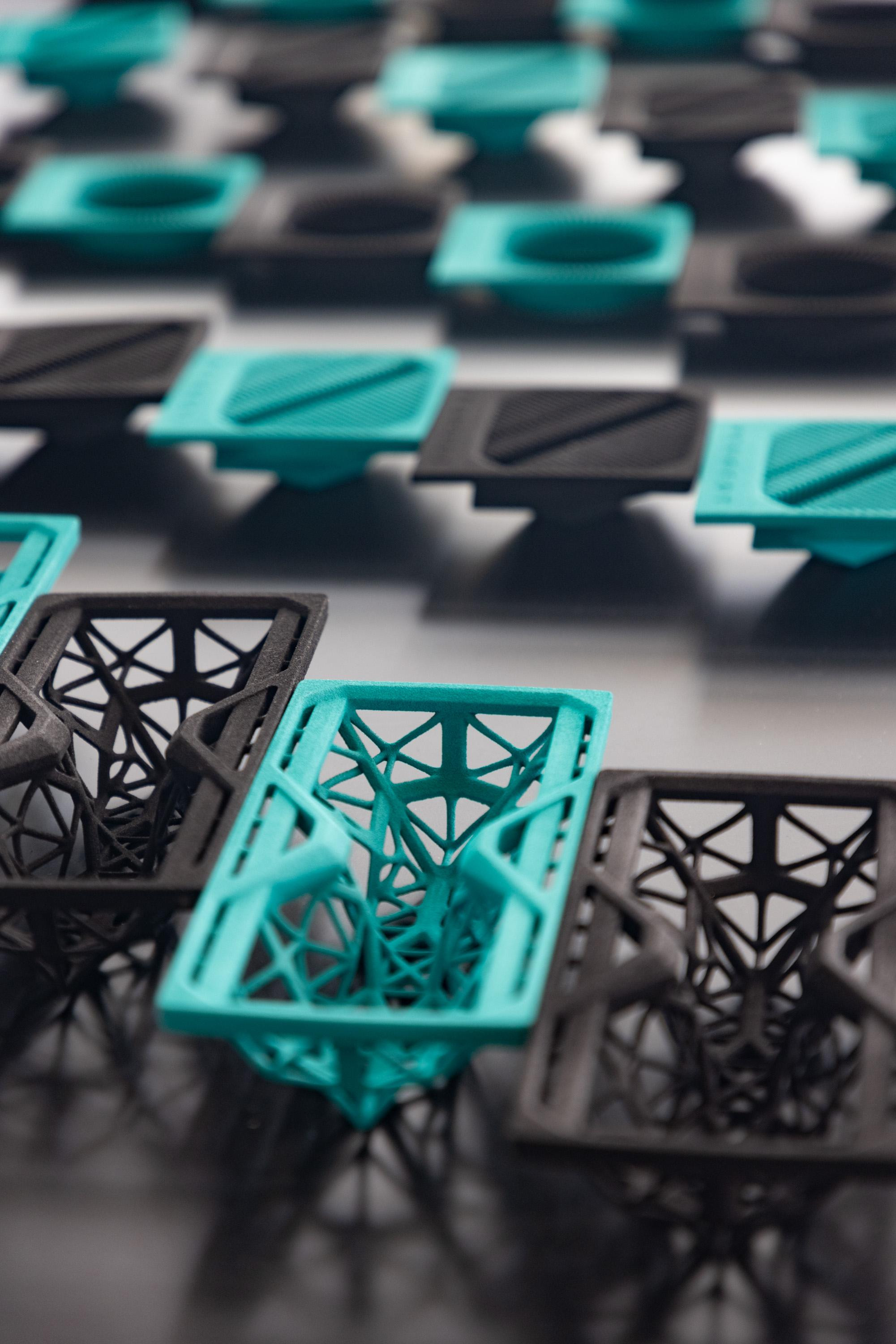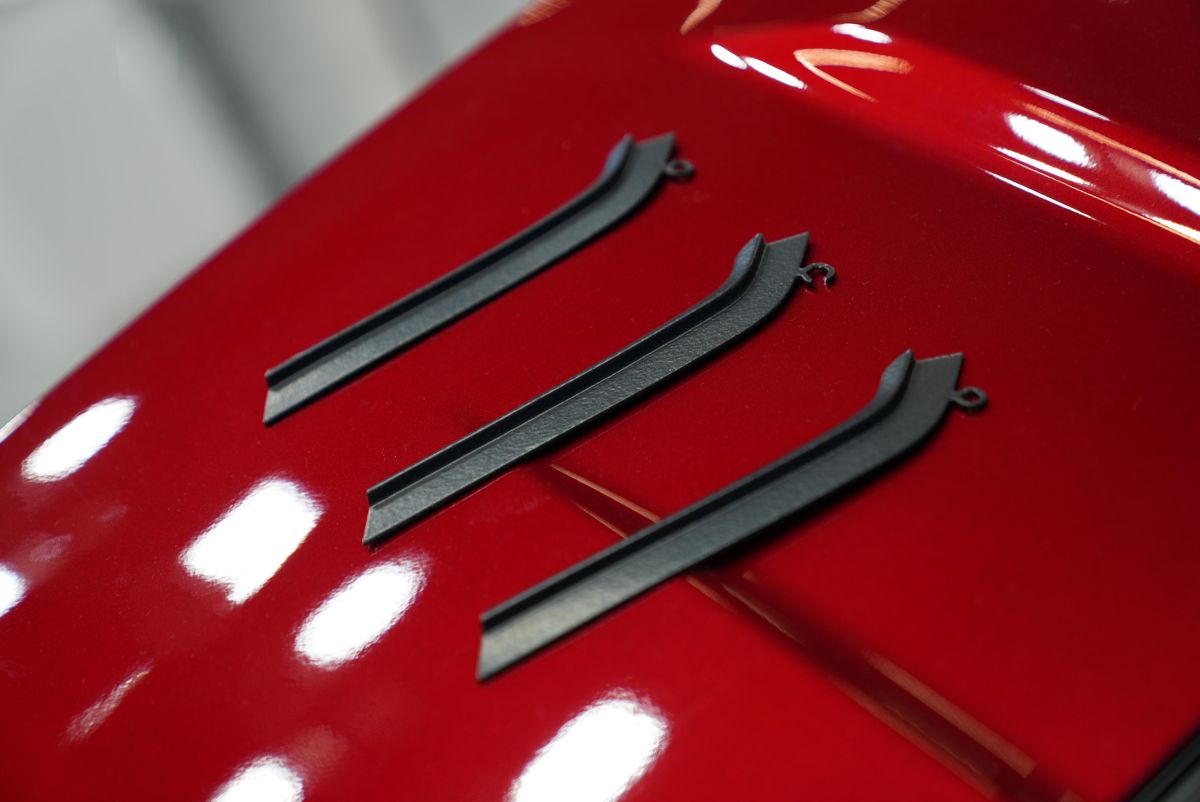When the 3D Printing in Collision Repair Task Force began investigating the potential use of 3D printing in the collision industry, participants reached out to HP for guidance. Aaron DeLong, HP Personalization & 3D Printing’s worldwide segment manager, is part of the task force and a member of Auto Additive’s Strategic Advisory Council, specializing in worldwide mobility.
“We collaborate with Auto Additive and our digital manufacturing network, connecting the needed automotive manufacturing to this sustainability effort,” said DeLong. “Our network of suppliers has a proven track record of implementing applications through design, engineering, testing and innovation."
DeLong has more than 25 years of experience in the automotive industry. Since joining HP in 2019, he has helped original equipment manufacturers (OEMs) understand the benefits of 3D printing, also known as additive manufacturing (AM).
“3D-printed car parts create better opportunities for optimization and mass customization,” he explained.
DeLong said the 3D printing industry has evolved in three distinct segments: rapid prototyping, additive manufacturing (applications at scale) and digital transformation.
“We’re seeing many players in the automotive industry, including OEMs, suppliers and software providers, shift their mindset from 3D printing as solely a prototyping option to a technology that can deliver production parts,” he explained. “Many recognize the massive potential for a more robust, long-term digital manufacturing strategy.”
Automotive manufacturer leaders -- such as GM, BMW and Volkswagen -- are adopting production-ready 3D printing technology.
“The use of 3D printing opens the door for manufacturers to express their creativity,” DeLong noted.
The collaboration with Auto Additive involves connecting to HP's Digital Manufacturing partners to deliver production capabilities.
DeLong explained that HP provides the printing technology, which is similar to injection molding machines.
“There are many elements involved, such as the powder manufactured to be processed with HP's technology, the software used to create the design, and the post-processing used for the final part finishing with other processes,” he said. “Testing is the responsibility of the OEM as the end-to-end owner.”
 These parts were produced for Peugeot using HP’s 3D printing technology.
These parts were produced for Peugeot using HP’s 3D printing technology.
He said HP’s Multi Jet Fusion 3D printing technology was created to enable high-quality parts and breakthrough economics.
Some examples include the collaboration with Oechsler and TECHART to use HP Multi Jet Fusion to develop a lightweight, performance-oriented car seat that offers enhanced ventilation and breathability while also providing the ideal damping properties needed for use on racetracks.
Stellantis’s brand Peugeot created a range of 3D-printed accessories using HP Multi Jet Fusion for storage of sunglasses, cups, phones and other items.
DeLong said the use of AM is far from widespread, and several challenges exist to employing it in a manner that would allow for its significant and speedy expansion. The most important challenges impacting the adoption of AM include part size restrictions, cost, production time and material constraints.
“Over the last few years, we’ve seen an increased focus on developing production-grade materials for auto applications as 3D printing moves from prototyping to full production of final parts and products,” noted DeLong. “HP’s Open Materials Platform has been a key driver in this evolution and has enabled HP and its customers to accelerate the development of production-grade applications.”
DeLong said collision repair facilities can greatly benefit from the opportunity to print parts locally by licensing designs from manufacturers or engineering their own designs.
“This approach can significantly speed up the repair process, enabling body shops to complete jobs more efficiently and accelerate revenue recognition,” he said.
Over the next few years, DeLong predicts one of the most exciting developments enabled by 3D printing will be entirely new design opportunities for manufacturers and engineers.
“This is an opportunity for a once-in-a-generation platform redesign as the industry moves toward the electrification of fleets and meets the demands for personalization and customized experiences,” he said.
DeLong added that HP is committed to accelerating that transformation through an ecosystem of solutions and technologies that enable automotive manufacturers to go from prototyping to full-scale production on the same technology platform.
He shared some benefits for the auto industry and the larger mobility segment.
“Accelerating the development cycle has never been so critical,” emphasized DeLong.
To meet the rising demand for fuel and range efficiency, he said HP’s offering of plastics and metals allows engineers to explore creating parts traditionally made with metal as plastic, potentially saving on fuel costs without sacrificing the durability of a part.
In addition, he said metal parts can be optimized to reduce weight and flow improvements by unlocking design freedom.
“3D printing allows manufacturers to reduce the number of parts they stock, while still meeting customer demand for speed when new parts are required,” explained DeLong. “It also allows faster manufacturing speeds, and manufacturers to move closer to a 1:1 ratio for supply to demand.”














Stacey Phillips Ronak